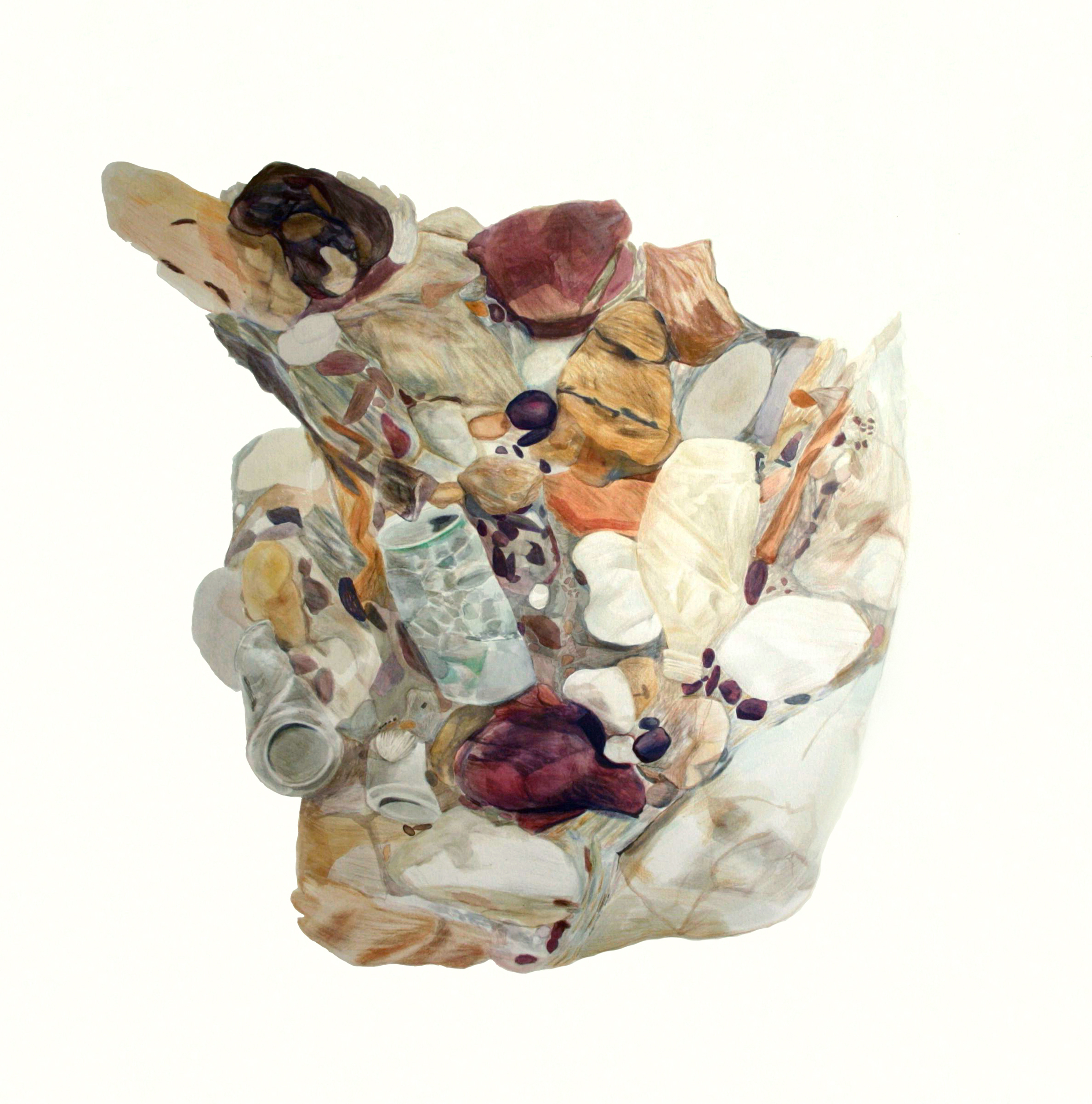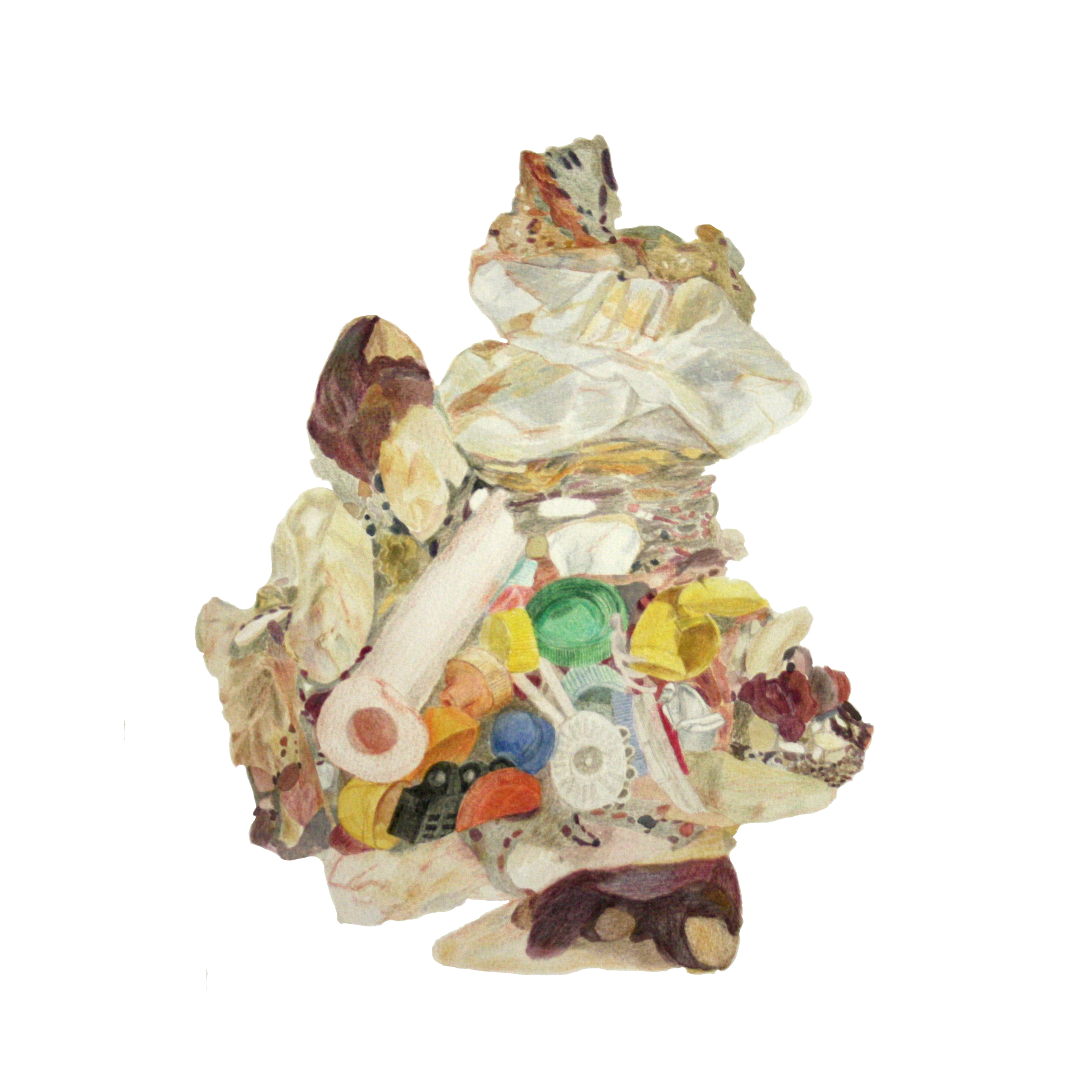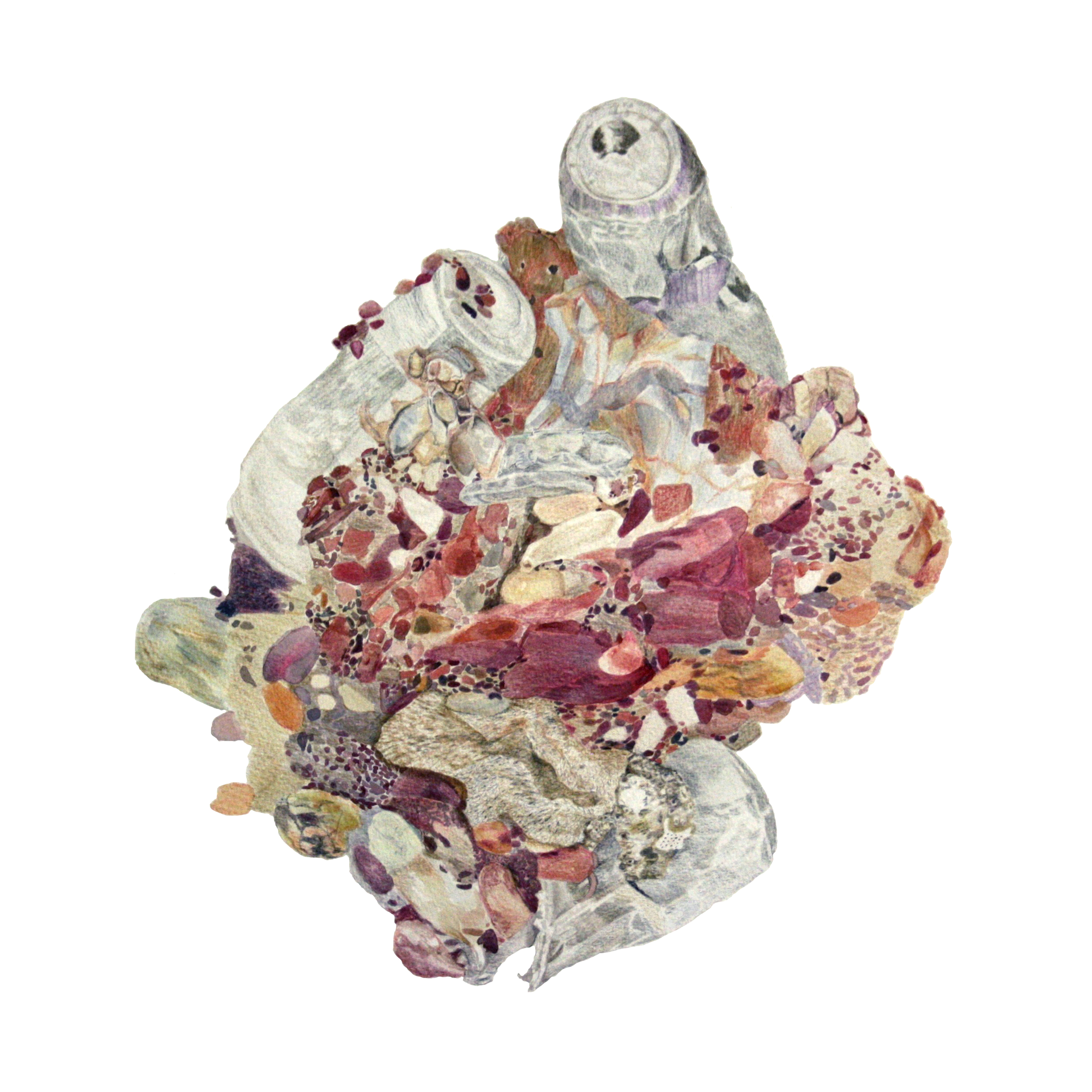Terraforming
-> Exhibition Title: Terraforming, 2014
at Nomad Art Gallery, NT, Australia
Down at Vesteys Beach, embedded in the sand and silt, is a collection of sedimentary rocks known as conglomerates. These conglomerates are the result of massive earth forming events across millenia. Consequently they have been deformed, metamorphosed and intruded by post-tectonic granitic and mafic rocks1. Fragments of shells bear witness to habitation from a Precambrian marine transgression.
Vesteys Beach conglomerates are time capsules that interact with the dynamics of present day conditions. These rocks gently release their particles undergoing transformation as waves and erosion free captured granite or shell to mingle with other shoreline debris.
Our shorelines today are littered with flotsam and jetsam: plastic bottles, aluminium cans, polystyrene, fishing wire, drinking straws, spent party poppers, weather balloons and the like. The tide reveals their presence temporarily before they are impassively reclaimed. Debris is crushed and deformed, crumpled and pushed forward to settle on our ocean floors, be eaten by marine life or absorbed into the growth cycle of spongers, corals and molluscs. As sedimentary materials they express the intersection of human history and geologica
l time. Marine transgressions made by us, washed ashore before forming part our future cultural geology.
1, Word en et al. 2008, Precambrian Research, v. 166, 122-144![Title: Conglomerate Year: 2013 Medium: watercolour & pencil Dimensions: paper 80 x 80 cm]()
Vesteys Beach conglomerates are time capsules that interact with the dynamics of present day conditions. These rocks gently release their particles undergoing transformation as waves and erosion free captured granite or shell to mingle with other shoreline debris.
Our shorelines today are littered with flotsam and jetsam: plastic bottles, aluminium cans, polystyrene, fishing wire, drinking straws, spent party poppers, weather balloons and the like. The tide reveals their presence temporarily before they are impassively reclaimed. Debris is crushed and deformed, crumpled and pushed forward to settle on our ocean floors, be eaten by marine life or absorbed into the growth cycle of spongers, corals and molluscs. As sedimentary materials they express the intersection of human history and geologica
l time. Marine transgressions made by us, washed ashore before forming part our future cultural geology.
1, Word en et al. 2008, Precambrian Research, v. 166, 122-144






